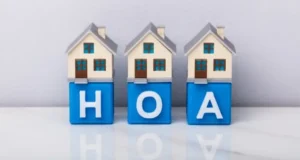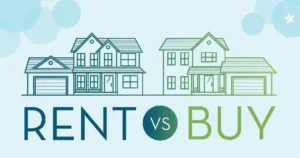Reducing your monthly mortgage payment can provide significant financial relief, especially if you’re navigating tight budgets or unexpected expenses.
While refinancing is the most well-known method, it’s not always feasible for everyone due to costs or eligibility criteria.
Fortunately, there are several ways to lower your payment without going through the refinancing process. Here’s how:
1. Re-Amortize Your Mortgage
Re-amortizing, or recasting, is a simple way to reduce your monthly payment. This process involves extending your loan term, which lowers your monthly payment by spreading the balance over a longer period.
- Benefits:
- Reduces monthly payment significantly.
- Minimal paperwork and lower fees compared to refinancing.
- Considerations:
- Available primarily for conventional loans.
- Increases the total interest paid over the loan’s life.
Example Table: Effect of Re-Amortization
| Current Loan Term | Remaining Balance | New Term (Years) | Monthly Payment Reduction |
|---|---|---|---|
| 30 years | $200,000 | 40 years | $150 |
| 15 years | $150,000 | 30 years | $200 |
2. Recalculate Your Escrow Payment
Escrow payments for property taxes and insurance are included in most monthly mortgage payments. If your taxes or insurance premiums decrease, your lender can recalculate your escrow payment, potentially lowering your total payment.
- Steps:
- Request a reassessment from your lender.
- Provide updated property tax or insurance documentation.
- Additional Tip:
- Shop for lower homeowners insurance rates to reduce escrow payments further.
3. Appeal Your Home’s Assessed Value
High property taxes can inflate your monthly payment. If you believe your home is overvalued, you can appeal its assessed value with your county.
- Process:
- Review your property’s tax assessment for errors (e.g., incorrect square footage).
- Submit evidence, such as comparable sales in your neighborhood, to the tax assessor’s office.
- Potential Savings:
- Reduced property taxes directly lower your escrow payment.
Example Table: Property Tax Savings
| Current Assessed Value | New Assessed Value | Tax Rate (%) | Annual Savings |
|---|---|---|---|
| $300,000 | $250,000 | 1.5% | $750 |
4. Rent Out a Room in Your Home
If you have extra space, renting out a room can offset your mortgage costs. While this option isn’t for everyone, it’s an effective short-term strategy.
- Advantages:
- Generates steady monthly income.
- Can cover part or all of your mortgage payment.
- Tips for Renting:
- Use platforms like Craigslist, Roommate.com, or Airbnb.
- Set clear terms, such as a 12-month lease, to protect yourself.
5. Eliminate PMI
Private Mortgage Insurance (PMI) is typically required for loans with less than 20% down. Once your loan balance reaches 80% of your home’s value, you may request to remove PMI.
- Steps to Remove PMI:
- Pay down your loan balance to meet the 80% loan-to-value ratio.
- Request a formal appraisal (if required by your lender).
- Alternative:
- Refinance into a conventional loan if your current loan requires PMI for its duration.
6. Shop for Lower Homeowners Insurance
Homeowners insurance premiums vary significantly between providers. Lowering your insurance rate can reduce your escrow payment and total mortgage costs.
- Steps:
- Get quotes from multiple providers using tools like Quote Wizard.
- Bundle insurance policies (e.g., auto and home) to qualify for discounts.
- Additional Savings Tip:
- Increase your deductible for lower monthly premiums.
7. Explore Loan Modification Programs
If you’re experiencing financial hardship, you may qualify for a loan modification. Programs like the Home Affordable Modification Program (HAMP) adjust your loan terms to make payments more affordable.
- Program Benefits:
- Lowers your payment to 31% of gross income.
- Often reduces interest rates or extends loan terms.
- Eligibility:
- Financial hardship, such as unemployment or medical issues.
8. Increase Your Credit Score
Improving your credit score can open the door to better loan terms or refinancing opportunities in the future. A higher score directly impacts the interest rate you qualify for, reducing your monthly payment.
- Quick Credit Fixes:
- Pay down credit card balances to improve utilization.
- Remove errors or disputes from your credit report.
- Become an authorized user on a trusted account.
9. Adjust Your Loan Terms
Switching to an adjustable-rate mortgage (ARM) or a 40-year fixed mortgage can lower your monthly payment. However, these options come with risks and should be approached with caution.
- ARM Features:
- Initial low-interest rates.
- Rate adjustments after a fixed period (e.g., 5 years).
- 40-Year Mortgage:
- Smaller monthly payments.
- Higher overall interest costs.
10. Take Advantage of Financial Assistance Programs
Programs like FHA Streamline Refinance, VA Streamline Refinance, or USDA Streamline Refinance can lower your payment without a traditional refinance. These government-backed options are ideal for borrowers with specific loan types.
Key Considerations
Lowering your mortgage payment without refinancing requires creativity and effort, but the savings can be substantial. Be proactive in exploring these options to ease financial strain while maintaining homeownership.
Frequently Asked Questions (FAQs)
Can I lower my mortgage payment without refinancing?
Yes, options like re-amortizing, removing PMI, or appealing property taxes can lower your payment without refinancing.
How can I remove PMI?
You can request PMI removal when your loan balance is 80% of your home’s value. Contact your lender to confirm eligibility.
Will re-amortizing my mortgage affect my interest rate?
No, re-amortizing only adjusts your loan term and payment amount, not the interest rate.
Can I negotiate lower homeowners insurance premiums?
Yes, shop around and compare quotes to find a more affordable policy.
How does renting a room help with my mortgage payment?
Renting a room provides extra income, which can offset or cover your monthly payment.
What is a loan modification?
A loan modification adjusts your loan terms to reduce your monthly payment, often due to financial hardship.
Are adjustable-rate mortgages risky?
ARMs have lower initial rates but can rise over time. They are best for short-term savings.
What is an FHA Streamline Refinance?
It’s a simplified refinancing option for FHA loan holders to reduce their interest rate and monthly payment.
















